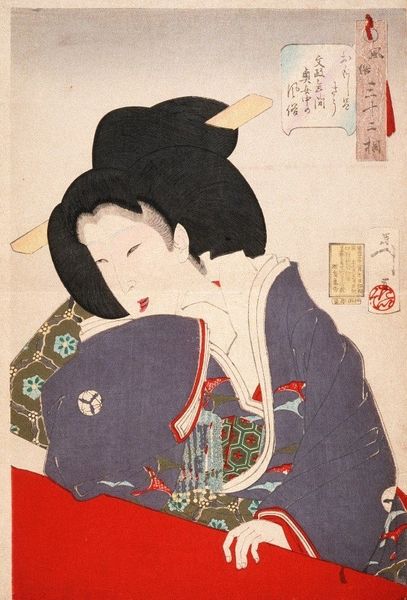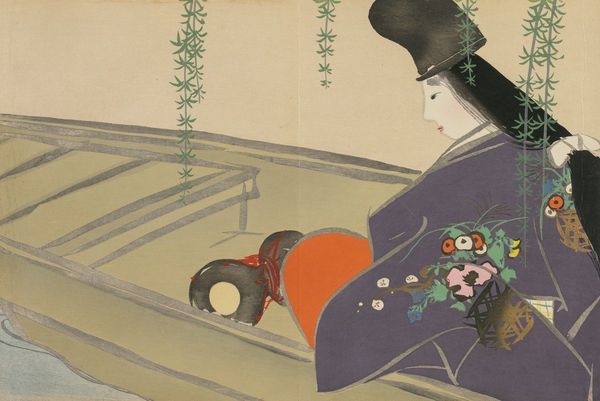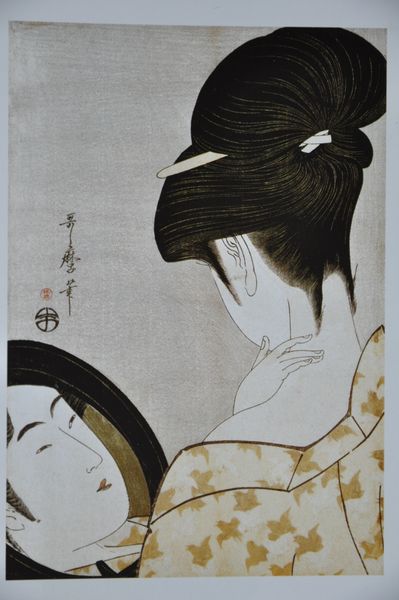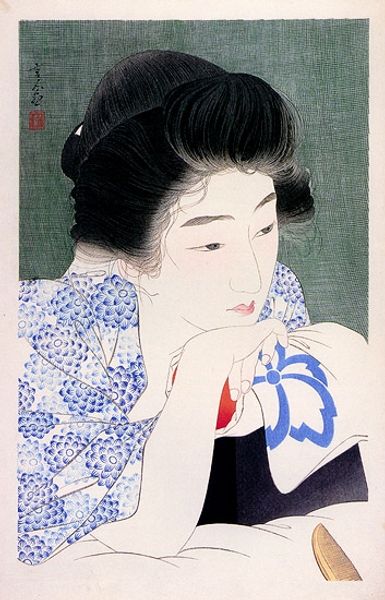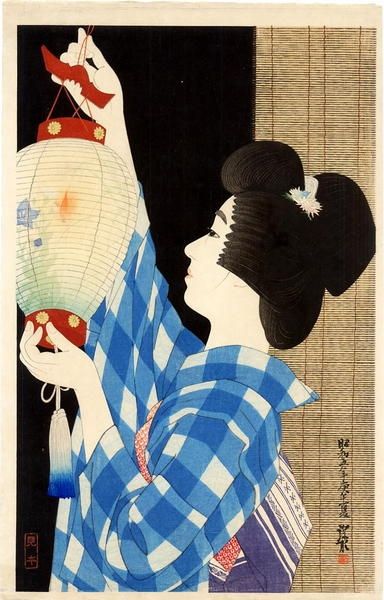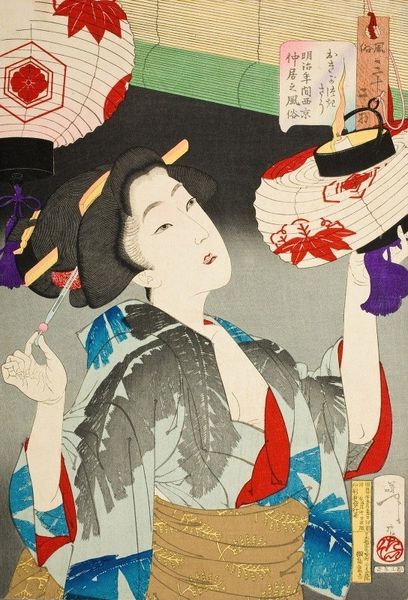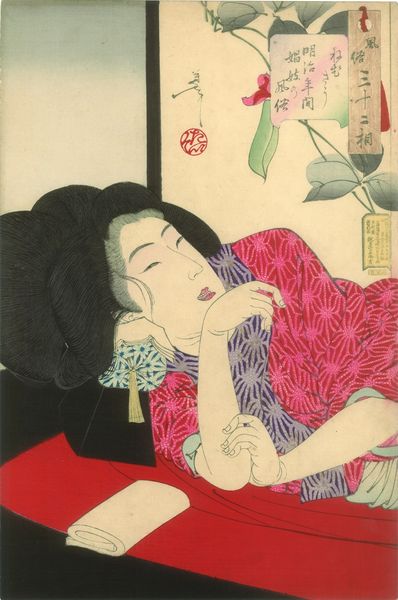
Dimensions: 73 x 86 cm
Copyright: Public domain
Curator: Uemura Shoen's 1944 painting, "Women Waiting for the Moon to Rise," is a delicate dance of color and anticipation. The artist beautifully portrays a woman in quiet repose. Editor: There's such a stillness. A melancholic kind of waiting hangs in the air, almost like a sigh held captive. What do you think about her gaze towards that unknown light source? Curator: Well, I think Shoen excels at depicting interiority, right? This feels like such a deeply felt moment—perhaps a universal longing for something just out of reach. She probably explored such sensations after witnessing wartime anxiety when creating that piece. Editor: Indeed. It is nearly impossible to detach such intimate representation of quiet desperation from the broader context of global conflict. We also have to recognize the socio-political nuances of Shoen being one of the few female artists recognized in a highly patriarchal artistic establishment. In essence, do you see her use of such themes and aesthetic sensibilities as strategies to create an intersection between self and society? Curator: Absolutely, it is hard not to get such a read from the art piece. Shoen uses this subtle visual language, playing with those delicate lines and muted tones to create this very feminine world, very personal. Look at how that blue kimono softly envelops her, those almost weightless fingers on her cheek! I get an overwhelming sense of gentle strength. It speaks to both vulnerability and the fierce determination to endure— almost a call for help. Editor: It speaks volumes. The way she's positioned against the simple backdrop emphasizes this idea. It could signify so many complex social factors affecting women like limited spatial or societal freedom. Curator: And I appreciate her use of traditional techniques within the context of the 20th century. It almost feels like a gentle rebellion, right? Refusing to abandon tradition while exploring very modern, intimate feelings. Editor: Precisely! Her quiet revolution offers a unique perspective, especially given the period and its impact on artmaking and women's position within cultural spaces. There's something radically subtle in choosing stillness and introspection when the world roars outside. Curator: So very well said, this dialogue between outward observation and deeply felt experience makes it an enduring source for generations to come!
Comments
No comments
Be the first to comment and join the conversation on the ultimate creative platform.



